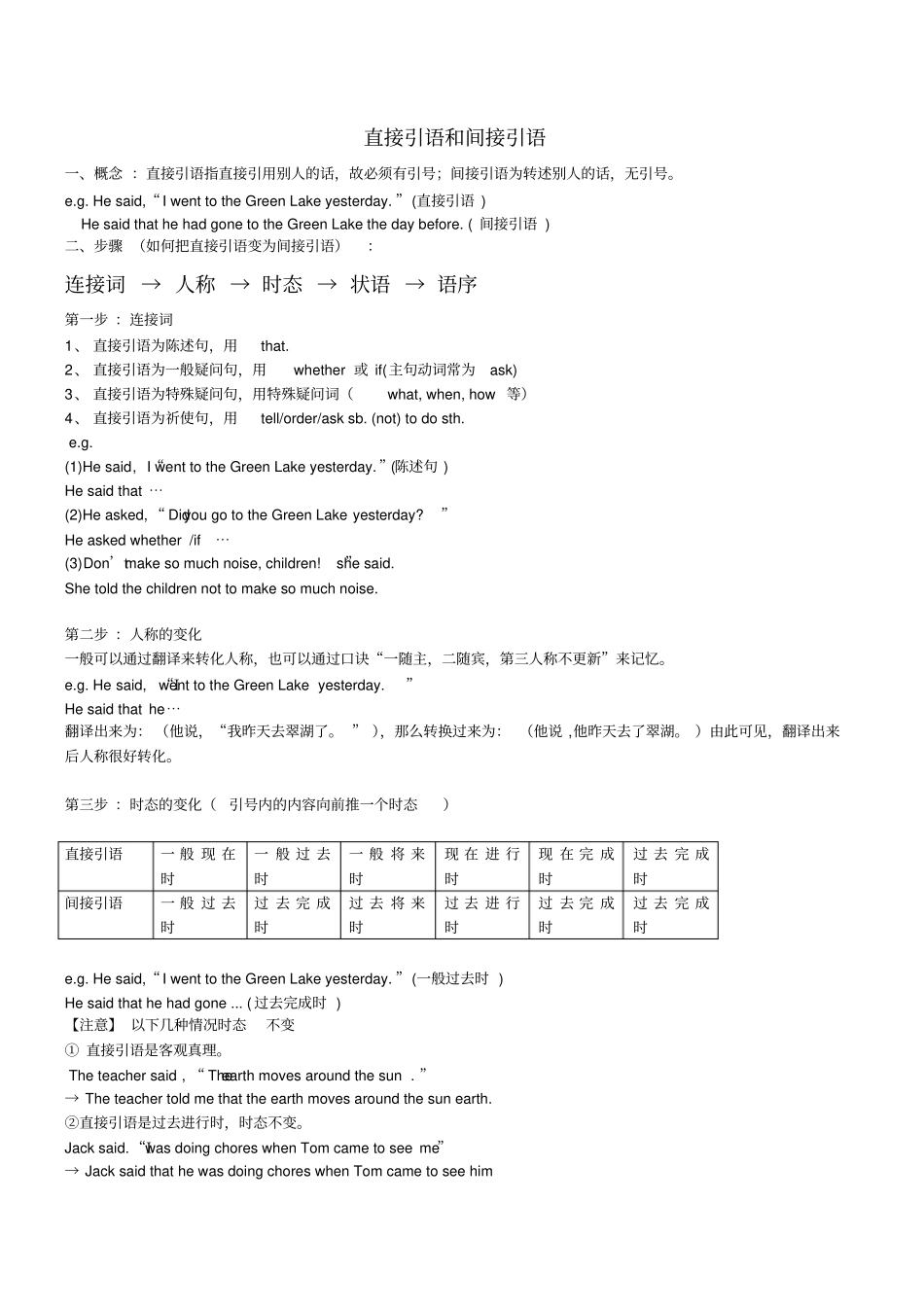直接引语和间接引语一、概念 :直接引语指直接引用别人的话,故必须有引号;间接引语为转述别人的话,无引号。e.g. He said,“I went to the Green Lake yesterday. ”(直接引语 ) He said that he had gone to the Green Lake the day before. ( 间接引语 ) 二、步骤 (如何把直接引语变为间接引语):连接词 → 人称 → 时态 → 状语 → 语序第一步 :连接词1、 直接引语为陈述句,用that. 2、 直接引语为一般疑问句,用whether 或 if(主句动词常为ask) 3、 直接引语为特殊疑问句,用特殊疑问词(what, when, how 等)4、 直接引语为祈使句,用tell/order/ask sb. (not) to do sth. e.g. (1)He said, “I went to the Green Lake yesterday. ” (陈述句 ) He said that ⋯(2)He asked, “ Did you go to the Green Lake yesterday?”He asked whether /if⋯(3)Don’t make so much noise, children!” she said. She told the children not to make so much noise. 第二步 :人称的变化一般可以通过翻译来转化人称,也可以通过口诀“一随主,二随宾,第三人称不更新”来记忆。e.g. He said,“I went to the Green Lake yesterday.”He said that he⋯翻译出来为: (他说,“我昨天去翠湖了。 ” ),那么转换过来为: (他说 ,他昨天去了翠湖。 )由此可见,翻译出来后人称很好转化。第三步 :时态的变化(引号内的内容向前推一个时态)直接引语一 般 现 在时一 般 过 去时一 般 将 来时现 在 进 行时现 在 完 成时过 去 完 成时间接引语一 般 过 去时过 去 完 成时过 去 将 来时过 去 进 行时过 去 完 成时过 去 完 成时e.g. He said,“I went to the Green Lake yesterday. ”(一般过去时 ) He said that he had gone ... ( 过去完成时 ) 【注意】 以下几种情况时态不变① 直接引语是客观真理。 The teacher said , “ The earth moves around the sun . ”→ The teacher told me that the earth moves around the sun earth. ②直接引语是过去进行时,时态不变。Jack said. “I was doing chores when Tom came to see me”→ Jack said that he was doing chores when Tom came to see him ...


